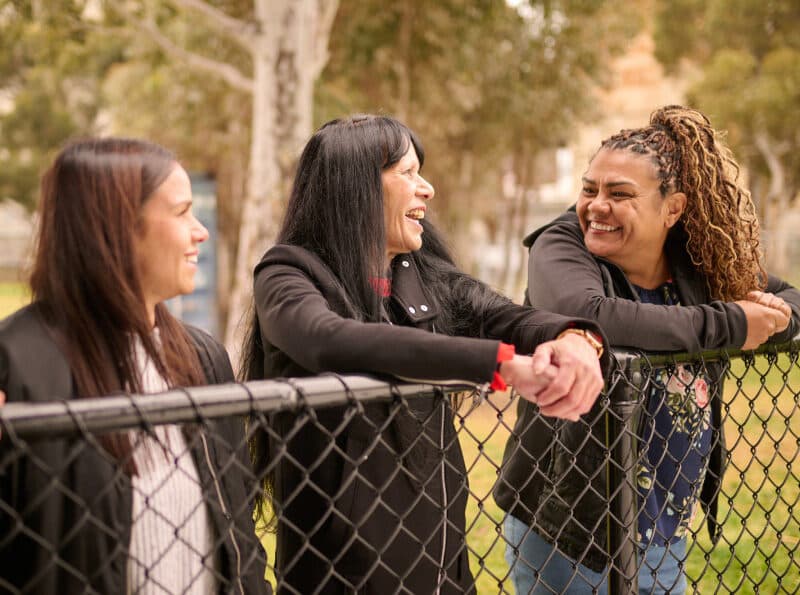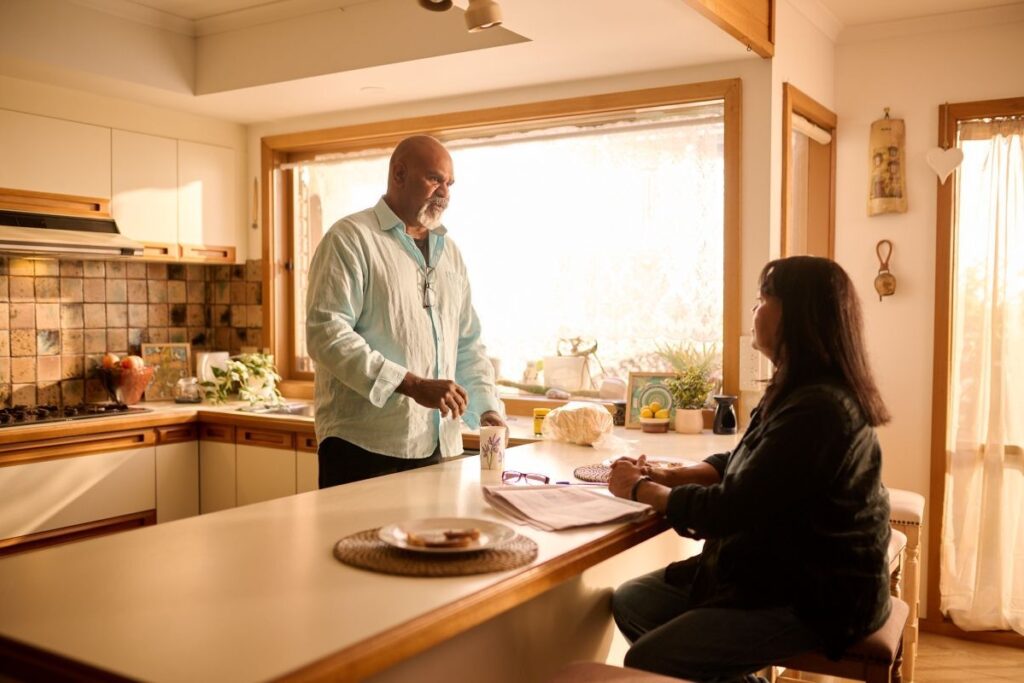For First Nations People
Lung cancer is the most common type of cancer and the most common cause of cancer death among Aboriginal and Torres Strait Islander people. The National Lung Cancer Screening Program can help change this.

It’s good to know - there's a new lung cancer screening program.
Lung screening can find lung cancer early, when it’s easier to treat. More than 65% of lung cancers can be successfully treated, if found early.
When lung cancer first starts, it has no symptoms. That’s why screening is important.
Screening could give you more healthy years to spend with your family and community.
Who is it for?
You may be able to get a free lung screening scan if you:
- are 50 to 70 years old, and
- currently smoke or quit in the last 10 years, and
- don’t have any symptoms (coughing up blood or chest pain), and
- have a smoking history of 30 pack-years or more (your doctor or health worker will help you work out if you can be screened).


Good to know
You don't have to quit smoking to do the scan.

How it works
The scan is called a low-dose computed tomography (CT scan). It takes pictures of your chest to look for signs of lung cancer. It's quick, painless and easy to do. Follow these four steps:
1. See a doctor, nurse or health worker to see if you're eligible
Your doctor, nurse or health worker will ask you a few questions to check if you're eligible. If you are, they'll give you a referral form to have your free scan.
2. Book your scan
You will need to book an appointment with your nearest radiology clinic to have your scan. You can book your scan online, by phone, or in person. Tell them it’s for the lung cancer screening program.
Live in a rural or remote area? Read more about how to access services in these areas.
3. Go for your scan
When you arrive at the clinic:
- you will be welcomed by a staff member, and they will explain what to expect
- you might need to fill out some paperwork and confirm your details
- you may be asked to complete a health check
- you will be asked if you can lift your arms above your head for 5 to 10 minutes
For the scan:
- a radiographer will take you to a private and safe space for your screening
- you will be asked to lie flat on the bed with your arms above your head
- will need to hold your breath and lie still for a few seconds while the machine takes images of your lungs.
It's normal to feel nervous or anxious about your scan. Yarn with your health worker if you need support, they're there to help you with any questions!
The scan is quick and painless and doesn’t involve any needles. Your appointment will only take about 10 to 15 minutes.
4. Get your results
A report will be sent to your doctor or health worker within a few weeks.
Information about your results may come to you from:
- Your doctor, nurse or health worker
- The National Cancer Screening Register (letter or text message).
If your scan is clear, you will need to come back for your next free scan in 2 years. Having regular screening is the best way to find lung cancer early, when it’s easier to treat.
It's Good to Know TV Ad for First Nations communities

Good to know
Your doctor or health worker can tell you where the nearest radiology clinic is. If you need help booking your scan, ask your local health worker. Some Aboriginal Medical Services will send the CT request and book the appointment for you.

What if they find something?
You might feel like it's too late or better to not know, but over 65% of lung cancers can be treated if found early enough. The earlier it’s found, the better your chances to treat it are.
If they don't find anything, you just need to come back again in 2 years for your next scan. If something shows up on your scan, your doctor, nurse or health worker will explain what it means and what to do next.
It is important to remember that the scan can sometimes find something that needs to be looked at more closely, but this does not mean you may have cancer. Sometimes the scan can show other things either in the lungs (such as emphysema), or outside of the lungs.
You won’t be doing this alone. Your health worker will be there with you along every step of the way. You may want to bring a support person to your appointments or scans to help you feel more at ease.
How much does it cost?
The scan is free for eligible mob. There might be other costs involved in getting the scan such as transport, parking and accommodation if you need to travel for your scan.
Your doctor's clinic or health service might charge a fee for the appointment; you can call ahead to check.
Your health service might be able to bulk bill (not charge you a fee) or help with costs. Speak to them if you have any concerns.
Can I still screen if I live remote?
Yes. If you’re living remote or don’t have easy access to a clinic or scan, speak to your local Aboriginal Health Worker or health service. They’ll help you find the best way to get checked, including travel support if needed.
Heart of Australia are driving mobile screening trucks to some rural and remote communities.

Supporting mob and community
Talking about cancer can be hard, but it’s important to have a yarn about lung screening to raise awareness and take care of community.
This scan is about giving you the best chance at a healthier future with your loved ones and community.

You can learn more about the National Lung Cancer Screening Program for Aboriginal and Torres Strait Islander people and Communities on the NACCHO website.